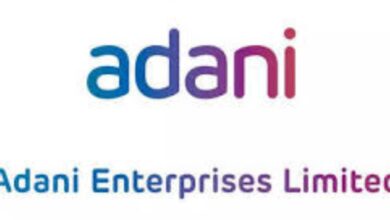Debt Mutual Funds Vs Bank FD – Which is better after Budget 2024?

After Budget 2024, between Debt Mutual Funds Vs Bank FD, which is better, and what should be our ideal debt portfolio strategy?
When comparing Debt Mutual Funds and Bank Fixed Deposits (FDs), it is important to note that both have similar taxation and return structures. This raises the pertinent question of which option is superior: Debt Mutual Funds or Bank FDs. However, before focusing solely on the taxation aspect, it is essential to understand the reasons behind your interest in a debt portfolio.
To accomplish your short-term goals, it is essential to have a debt portfolio. Additionally, for the sake of diversification, a debt portfolio is also necessary for your long-term goals. In both scenarios, the main rationale for choosing a debt portfolio lies in its lower volatility, reasonable returns, and inherent safety.
When one neglects the fundamental principles of requirements and focuses solely on returns, it leads to an increased level of risk, often surpassing that associated with equity investments. Therefore, it is essential to maintain a clear understanding of the debt portfolio.
Let me highlight these important points which may help you in deciding whether to go with Debt Mutual Funds or Bank FDs.
# Liquidity – Both Debt Mutual Funds and Bank Fixed Deposits (FDs) offer liquidity; however, withdrawing from Debt Mutual Funds within a year typically incurs an exit load. In contrast, premature withdrawal from Bank FDs is subject to penalties. Therefore, in this context, Debt Mutual Funds appear to be the more advantageous choice.
# Returns – The returns generated by Debt Mutual Funds can vary based on the particular type of fund selected and the timing of your investment. Conversely, Bank Fixed Deposits (FDs) provide consistent and reliable returns. Thus, if your main priority is safety, Bank FDs would be the more suitable choice for you.
# Taxation – Although both Debt Mutual Funds and Bank Fixed Deposits are subject to taxation based on your applicable tax bracket, the lack of a Tax Deducted at Source (TDS) mechanism for Debt Mutual Funds means that, even if the returns from both investment options are identical, the post-tax returns from Debt Mutual Funds will be slightly higher than those from Bank Fixed Deposits.
# Ease of Management and Investment – Within a single folio, investors have the option to invest either as a lump sum or on a monthly basis in Debt Mutual Funds. In contrast, if one chooses Bank Fixed Deposits (FDs), it is necessary to establish new FDs each month for monthly investments or whenever a new investment is made. Alternatively, Recurring Deposits (RDs) can be considered; however, the maximum tenure for RDs offered by SBI Bank is 120 months. If your investment horizon exceeds 10 years, Bank RDs or FDs would not be suitable options. Additionally, managing multiple FDs over the years may become increasingly burdensome.
# Risk – The performance of Debt Mutual Funds is contingent upon the specific category of bonds in which the fund is invested, the prevailing interest rate cycle, and various associated risks, including credit risk, default risk, and interest rate risk. For a more comprehensive understanding, please refer to my previous series of posts on this topic. “Debt Mutual Funds Basics“. In the case of Bank Fixed Deposits, the concept is straightforward. The maximum coverage in the event of a bank default is limited to Rs. 5 lakh. Therefore, if your available investment exceeds this amount, it is advisable to diversify your investments across multiple banks or accounts. Another viable option is to consider Post Office Term Deposits. (Post Office Savings Schemes Interest Rates July – Sept 2024).
Taking into account all these factors, I understand that the recent changes made in previous Budgets have resulted in a significant tax burden on your debt portfolio. Therefore, I recommend that you consider the following strategy.
If your goals are short-term (within 2-3 years) –
Bank FDs/RDs, Liquid Funds, Money Market Funds, Target Maturity Funds (If your requirement matches the maturity of the fund), or Arbitrage Funds (be ready to face certain negative returns for few months. Refer to my post – Can Arbitrage Funds give negative returns?)
If your goals are more than 2-3 years but less than 10 years or so –
Money Market Fund, Ultra short-term debt Fund, Target Maturity Funds (If your requirement matches the maturity of the fund), Edelweiss CRISIL IBX 50:50 Gilt Plus SDL Short Duration Index Fund, or Bank FDs/RDs (if you feel managing is easy for you and ready to manage the yearly TDS issue).
If your goals are more than 10 years or so –
Always give first preference to PPF, SSY, or EPF kind of instruments. If you are still left with a debt part to be invested, then I suggest an equal split between Money Market Funds and Gilt Funds.
The rationale against conservative Hybrid Funds is grounded in recent regulatory changes that classify them as Debt Funds for tax purposes. Furthermore, there is a lack of transparency regarding the investment allocation between equity and debt within these funds. Consequently, I refrain from endorsing any hybrid funds, including Dynamic Asset Allocation Funds or Balanced Advantage Funds. The fundamental objective of a debt portfolio is to provide clarity, safety, and reduced volatility in returns. If the goal is to enhance returns, a more effective strategy would be to increase the equity allocation within your overall investment portfolio.
Conclusion – I know that it is painful to pay a hefty tax on our investments. However, it is important not to change your investment strategy or take on excessive risks just to avoid taxes. A debt portfolio is crucial for managing risk, rather than solely for minimizing tax liabilities on our investments.
For Unbiased Advice Subscribe To Our Fixed Fee Only Financial Planning Service
Subscribe to our latest blog posts




